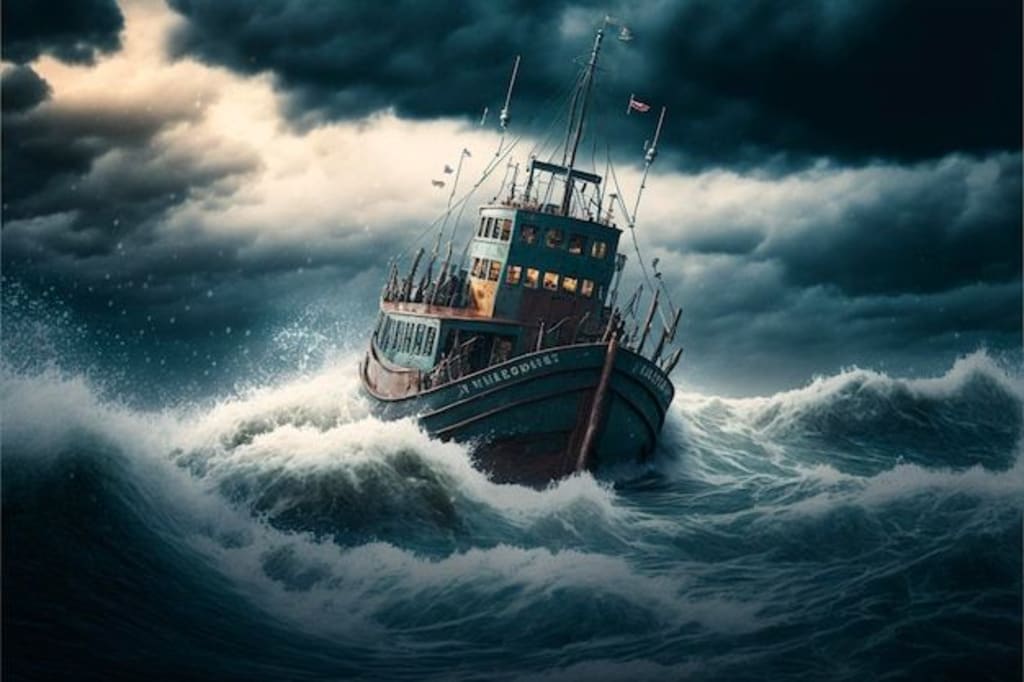
On January 13, 2012, at 7:15 PM, the world's largest Italian cruise ship, the Costa Concordia, set sail for a 7-day European tour. This massive ship was not only larger than the Titanic but also had the capacity to seat an additional 2,000 passengers, bringing the total number of people on board to 4,252.
The Costa Concordia was a floating palace of entertainment with four large swimming pools, five restaurants, thirteen bars, a casino, a basketball court, a huge fitness centre equipped with a gym, a sauna, a Turkish bath, and even an F1 racing simulator.
The ship's first destination was Savona, a city in Italy, a journey expected to take about a day. However, just 2.5 hours after departure, a sudden piercing noise reverberated through the ship. The lights went out, and the ship began to tilt to one side. It was 9:45 PM, a time when some passengers were sleeping in their cabins while others were dining. Plates slid off tables, and passengers were alarmed.
Passengers were informed of an electrical failure, but the reality was far more dire. The ship's engine had failed, a fact the captain was hiding. The ship began to tilt to the other side, making passengers realise this was no ordinary electrical issue. Comparisons to the Titanic, which sank exactly 100 years earlier in 1912, were inevitable, especially since the Titanic's theme song "My Heart Will Go On" was playing in the dining hall at the time.
The situation worsened as water started flooding the lower cabins. Despite the evident danger, the captain remained silent, leaving passengers uninformed. Costa Crociere, the company operating the ship, had a long history dating back to 1948, transitioning from cargo to passenger ships, eventually becoming part of Carnival Corporation in 2000.
Captain Francesco Schettino, an experienced sailor with the company since 2002, was at the helm. Schettino had deviated from the ship’s normal route to sail past Giglio Island, intending to show off the illuminated ship to the island's residents. This manoeuvre brought the ship dangerously close to the shore, just 150 metres away, at a high speed in the dark of night. The Italian Ministry of Infrastructure and Transport later confirmed this unsafe navigation.
Schettino’s decision to sail close to the island was a tribute to his former superior, Senior Captain Mario Palombo, who lived on the island. Although Palombo was not present that night, Schettino continued with the risky sail-by. At 9:40 PM, after a brief phone call with Palombo, the ship collided with underwater rocks, tearing a 70-metre-long gash in its hull, just 100 metres from the island.
Water flooded the ship rapidly, reaching the hallways and submerging the engine room. Attempts to start the emergency diesel generator failed. Schettino falsely reassured passengers that it was just a blackout. Meanwhile, the ship continued to move forward, away from the island.
At 10 PM, Schettino decided to turn the ship around, fearing the dangers of sinking in open sea. The ship, now tilting to the right, was in chaos. Passengers, now aware of the severity, panicked. Some jumped into the water, swimming to the nearby island. Others waited for lifeboats amid the increasing tilt, reaching 30° by 10:48 PM. Over an hour had passed since the collision.
Despite the escalating danger, Schettino delayed giving the order to abandon ship until 10:54 PM. Panic ensued as passengers scrambled for lifeboats. Some brave crew members and passengers, assisted others in evacuating. Tragically, Rebello died while helping others.
In stark contrast, Captain Schettino abandoned ship early, later making feeble excuses in court. His actions were widely condemned. Giglio’s residents, including Deputy Mayor Mario Pellegrini, assisted in the rescue efforts. Around 2,500 to 3,300 people reached the island safely by early morning. However, 32 people perished in the disaster.
Rescue operations continued for weeks, involving divers, the Italian Navy, Coast Guard, and fire services. Efforts to extract fuel and salvage the ship, declared a constructive total loss, cost over $1.2 billion. The ship was finally dismantled and sold for scrap by July 2017, costing the company around $2 billion in total.
Captain Schettino, sentenced to 16 years in prison for manslaughter, continued to lie about his actions. His former superior, Mario Palombo, revealed Schettino's history of dishonesty. Unlike Schettino, Captain Roberto Bosio, who was onboard the Concordia that night, exemplified true leadership, assisting passengers till the end.
The Costa Concordia disaster serves as a stark reminder of the dangers posed by leaders who refuse to admit their mistakes. It’s crucial to have trustworthy and competent leaders at the helm, especially in times of crisis.
About the Creator
Enjoyed the story? Support the Creator.
Subscribe for free to receive all their stories in your feed. You could also pledge your support or give them a one-off tip, letting them know you appreciate their work.






Comments
There are no comments for this story
Be the first to respond and start the conversation.